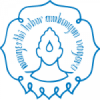Keywords : malaria, tropical disease, calophyllum plant
Wartono, Muhammad W.; Marliyana, Soerya D.; Suryanti, Venty
LPPM UNS, Penelitian, DP2M, Hibah Kompetitif Penelitian Strategis Nasional, 2009
Malaria represent tropical disease which infection around 250 million people in the world and estimated to result one million death especially children below five year. Indonesia reported there are 1.5 million cases in 2006. This disease because of Plasmodium species where Plasmodium falciparum represent case which causing many death. Malaria parasite propagated by female Anopheles mosquito. Medication malaria used quinin or choroquinin, but reported some Plasmodium strain have resisten to klorokuin. Opportunity look for new drug materials from original Indonesian plants. Indonesia has natural resources from original palnts which have been used in traditional medication. One of the plant which not yet checked by many its nature materials content to antimalaria lactivity is Calophyllum. This Genera rich of coumarins and xanthones Six compounds were isolation from woodbark, leaeves and rootbark of Calophyllum inophyllum plant. The sample was extracted with methanol for 24 hours. The MeOH extract, on removal of solvent under reduced pressure, gave crude extract and the MeOH extract was sequentially fractionated by VLC Si-gel into hexane and EtOAc fractions. Si-gel flash column chromatography and sephadex LH-20 used for purification of the compounds. Two compounds were isolation from woodbark of C. inophyllum that are CI-1 and CI-2. Two compound CI-3 and CI-4 also isolated from leaves of C. inophyllum. From the root bark isolated two compounds that are CI-5 and CI-6. Identify of six compounds to structure determination use UV and IR spectroscopy methode. Mass spectroscopy, 1H and 13C NMR stills in course. The obtained purification compounds will be tested by in vitro antimalarial activity to malaria parasite that is Plasmodium.

